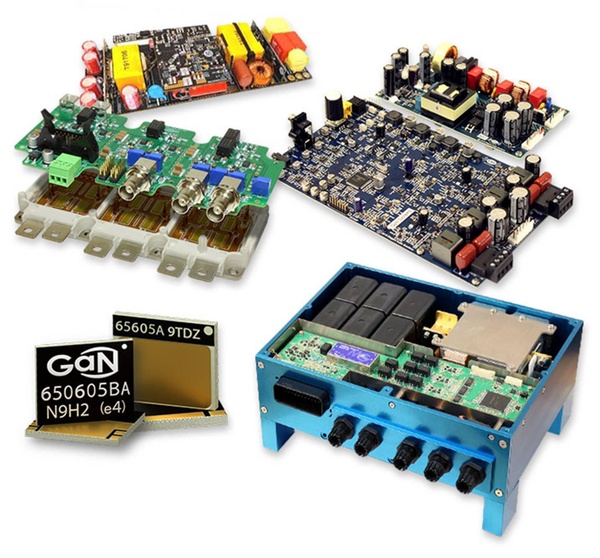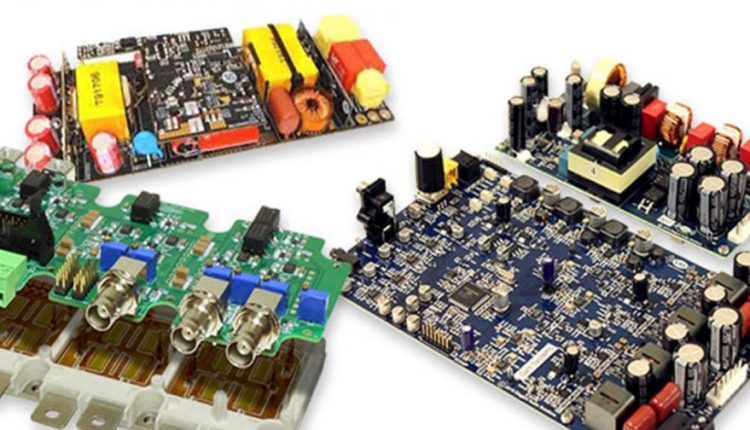GaN is changing the way we power things, and that’s becoming increasingly evident whether you look at consumer, automotive, 5G, or industrial power applications.
Take 5G — It’s high bandwidth and low latency. From the consumer standpoint, that means fast video downloads with no lag.
But as Jim Witham, CEO of GaN Systems, says, “The dirty little secret with 5G is that big data is done at high frequency at approximately 28 gigahertz, and 28 gigahertz doesn’t go through the wall. It doesn’t go through windows that have low emissivity glass because there’s metal in it. It bounces and goes right back out. We use our computers inside, we use our phones inside. They’re supposed to work on a problem that the industry has to solve, and we’re helping solve that.”
The sense of being on a problem-solving mission is obvious for GaN Systems this year.
“2020 is the year of the GaN adapter,” he proclaims (more than once). Whether it’s a tiny 65-watt USB-C charger with retractable prongs that can charge a phone, a tablet and a computer and slip easily into a purse or a 170-watt adapter for a gaming computer that’s a third the size of its silicon equivalent, “it’s the way the world should have been for years and years and years. And now you can actually do it.”
On the 5G front, Witham acknowledges there are two schools of thought about how best to boost the 5G signal.
“Both of them involve having a box on the side of the house, and a box on the inside of the house. It’s basically a repeater. You receive the signal from the outside, you rebroadcast it inside. When you’re in the house, when you’re sending something to the network, it goes to the inside box and then gets retransmitted out to the outside world,” says Witham.“One group of people is doing it through the window, another group is doing it through the wall.”
Usually outside power isn’t readily available, and the box has to be positioned optimally to ensure a line of sight with the 5G network. GaN has come up with through-window and through-wall GaN solutions. “We’re the power guys, so we’re getting the power through the wall.”
They’ve accomplished this by teaming with Micro Linear, a Los Angeles-based semiconductor company “that does data the best,” according to Witham.
Interior and exterior coils transmit power back and forth through a wall. GaN is able to create devices that measure 20 millimeters by 20 millimeters (8 inches by 8 inches). With the GaN setup, “[W]e can get 65 watts on through the wall. That’s an eight-inch [200-millimeter] wall. And we can do it at very high efficiencies. So these are record breaking power levels and efficiency levels and distance levels” that have networking companies “drooling,” he adds.
The through-window GaN Systems solutions are a quarter the size of low frequency options, while their through-wall solutions have twice the power of other options currently available on the market.

What else?
On the industrial front, GaN has worked with Phihong to create a 170-watt AC/DC adapter that’s high efficiency, lightweight, and one third customary size. GaN’s also worked with CUI to create a line of industrial equipment and medical power supplies and with ON Semiconductor to create a 300-watt power supply that makes controllers and drivers smaller, more integrated, less expensive, and provides high power density rarely seen in 300-watt power supplies.
Audio Class D amplifiers, which tend to be used as either pro audio or outdoor audio for boats, skidoos, and other outdoor venues, are getting rave reviews from music industry professionals. “Audio has special requirements so you don’t get noise from the power supply onto that audio system and compromise your music. And this is such high performance and quality that some customers are just taking this and actually putting it in their plastic box or their amplifier box and putting their logo on it. Others are taking the reference design and customizing it to do their own thing. But once you’ve heard GaN audio versus silicon audio, you just don’t want to go back.”
GaN is also supplying GaN transistors for the traction inverter onboard chargers for EV start-up Canoo, led by former BMW executives. Canoo’s designed a skateboard platform whose onboard charger includes GaN transistors mounted on an insulated metal substrate board with a printed circuit board on top and metal on the back, which Witham says is a “very inexpensive, easy way to get the heat out of the transistors. And so you end up using less transistors and minimizing your dollars per watt on your system costs.” In February 2020, Hyundai announced it would be using the Canoo platform for its Canadian-produced TK EVs. “Canoo looks like a real winner in the EV platforms. And we’re pretty happy with that as they use our devices…. Now we’ve got Hyundai, Toyota, BMW — a pretty strong lineup of GaN supporters in the automotive industry,” said Witham.
All of which makes 2020 the year of the GaN adapter.

